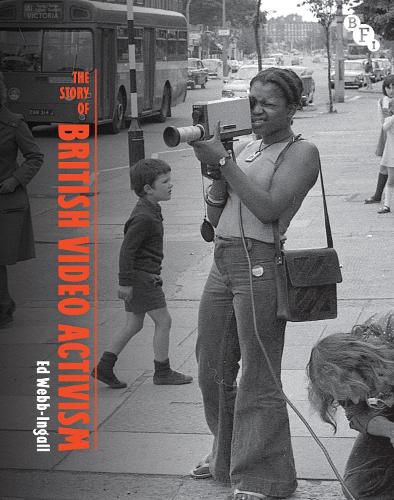Readings Newsletter
Become a Readings Member to make your shopping experience even easier.
Sign in or sign up for free!
You’re not far away from qualifying for FREE standard shipping within Australia
You’ve qualified for FREE standard shipping within Australia
The cart is loading…






Richly illustrated with unique material from the BFI archive and the London Community Video Archive, The Story of British Video Activism is the first authoritative account of the history and practice of community video. Community video has been all-but ignored in histories of non-fiction filmmaking in the UK. Ed Webb-Ingall offers a renewed perspective on this aspect of British moving image practice. He traces the impact of portable video recording technology on the development of new modes of activism and self-representation produced by different community groups between 1969 and the mid 1990s. He positions community video as a moving image practice with its roots in the workers' films of the 1930s and its immediate antecedents in 1960s political filmmaking. Webb-Ingall explores how this approach developed contemporaneously with video art and community art in the 1970s. He concludes by linking the experimentation with video in the 1970s to the subsequent use of video by activists into the 1990s, and on to the explosion of digital/online activist and community filmmaking of recent years.
Each chapter features a 'close up' to illustrate the theme of the chapter. Examples include video technology (The Sony Portapak, VHS and Hi-8), movements such as cybernetics, community cable television, Challenge for Change (Canada), Newsreel (the USA), and events (e.g. The Video Show in 1975).
$9.00 standard shipping within Australia
FREE standard shipping within Australia for orders over $100.00
Express & International shipping calculated at checkout
Richly illustrated with unique material from the BFI archive and the London Community Video Archive, The Story of British Video Activism is the first authoritative account of the history and practice of community video. Community video has been all-but ignored in histories of non-fiction filmmaking in the UK. Ed Webb-Ingall offers a renewed perspective on this aspect of British moving image practice. He traces the impact of portable video recording technology on the development of new modes of activism and self-representation produced by different community groups between 1969 and the mid 1990s. He positions community video as a moving image practice with its roots in the workers' films of the 1930s and its immediate antecedents in 1960s political filmmaking. Webb-Ingall explores how this approach developed contemporaneously with video art and community art in the 1970s. He concludes by linking the experimentation with video in the 1970s to the subsequent use of video by activists into the 1990s, and on to the explosion of digital/online activist and community filmmaking of recent years.
Each chapter features a 'close up' to illustrate the theme of the chapter. Examples include video technology (The Sony Portapak, VHS and Hi-8), movements such as cybernetics, community cable television, Challenge for Change (Canada), Newsreel (the USA), and events (e.g. The Video Show in 1975).